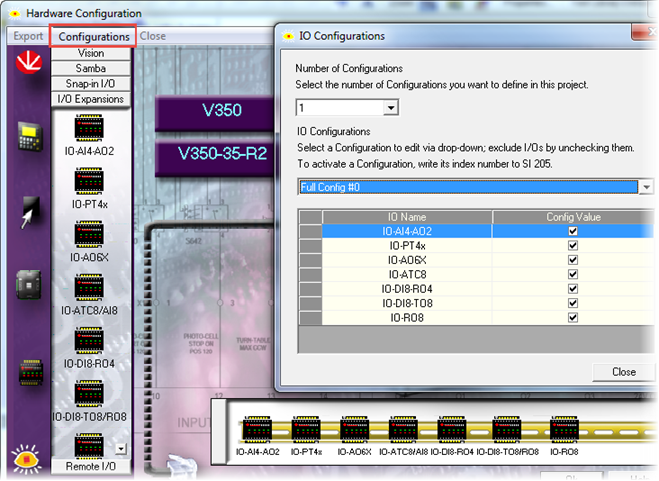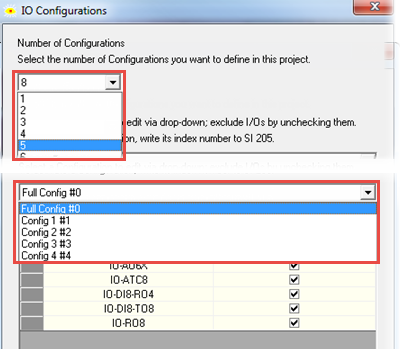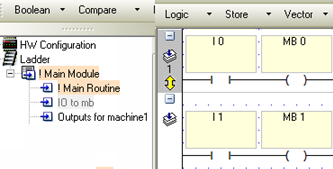If your project includes I/O Expansion Modules, you can create variations called 'Configurations'.
Configurations are hardware profiles that enable a controller to run the application if it has a physical I/O configuration that is different from the full I/O Configuration in the project. Each profile that you create has an index number.
All of the Configurations are downloaded along with the project.
You determine which configuration is active by storing
a value in SI 205.
When you store the value, the controller will reboot and will use the selected
hardware configuration.
The application will run according to the selected Config without error.
Note: You can only
store the index numbers that are actually associated with a conifiguration.
If, for example you have defined only 4 configurations, and you store
the number 7, the application will not run.
Note that, in order to enable your program logic to run correctly when switching configurations, you must map the digital inputs and outputs to MBs, and use these MBs as program conditions instead of Input and Output operands. Since analog I/Os are linked to operands, they do not require any special handling.
To map the digital I/Os, you use the functions described below.
Note: You cannot create dynamic Configurations until you have added I/O Expansion modules in Hardware Configuration.
Creating Dynamic Configurations
Complete your I/O Configuration, and then click on the I/O Configurations tab.
Note that there are two drop-downs, Number of Configurations and IO Configurations.

Click on the Number of Configurations drop-down. This is the total quantity of Configurations you want to define in the project; 8 is the maximum number. Select a number.
Click on the second drop-down and select the Configuration you want to define. Note that:
- Each Configuration has an index number. When you want to activate Configuration 3, for example, you store the value 3 into SI 205. -0 is the full Configuration, and 0 is the default value of SI 205.

Select the Configuration to edit via the drop-down arrow, then exclude the desired I/Os by unchecking them.
In the next figure

To adapt the actual I/Os to the application, you use the functions Input to MB and MB to output, located on the Utils menu under HW Configuration Subroutines.
Map the I/O to the desired bits; the function will automatically create subroutines.

Include the code for inputs at the beginning of your program, and the outputs at the end.
